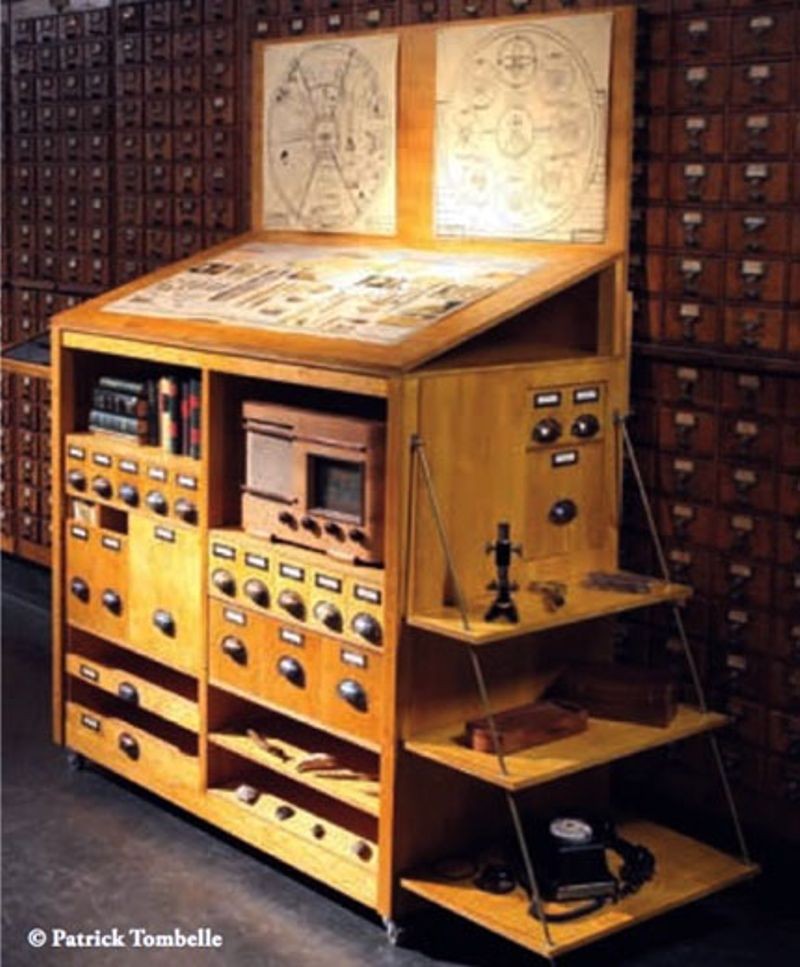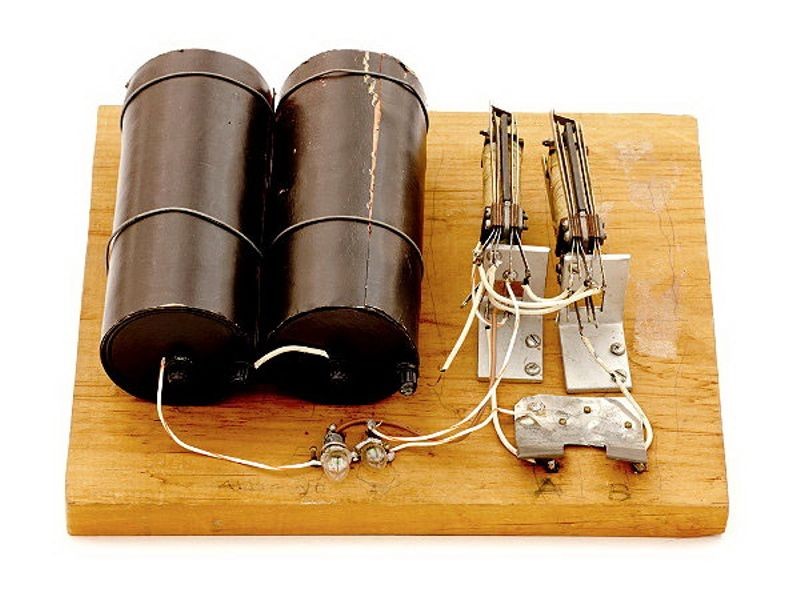
Americans using teleprinters, World War II
Telex messaging network comes on line
Like the Volkswagen Beetle and modern freeway systems, the Telex messaging network comes out of the early period of Germany’s Third Reich. Telex starts as a way to distribute military messages, but soon becomes a world-wide network of both official and commercial text messaging that will persist in some countries into the 2000s. Telex uses teleprinters, which date back to the 1910s for use in telegraphy. But instead of using pricey dedicated telegraph lines, the telex system connects those teleprinters to each other over voice telephone lines, routed by modified telephone switches. Wireless versions of Telex soon connect remote regions of the developing world.

Mockup of a “Mondothèque,” or home multimedia workstation to be connected to a universal library
“World Brains”
Belgian Paul Otlet has a modest goal: collect, organize, and share all the world’s knowledge. Otlet had co-created a massive “search engine” starting in the early 1900s. His Mundaneum now combines enhanced card catalogs with sixteen million entries, photos, documents, microfilm, and more. He is working on integrating telegraphy and multiple media, from sound recordings to television. In the 1930s British writer H.G. Wells and American scientist Vannevar Bush are advancing similar goals—Wells with his “World Brain” writings and Bush with the Memex, a sort of microfilm-based Web browser. These approaches to organizing information differ. But all share key features of today’s Web, including automated cross-references – which we call hyperlinks.

“Model K” Adder
Bell Laboratories scientist George Stibitz uses relays for a demonstration adder
Called the “Model K” Adder because he built it on his “Kitchen” table, this simple demonstration circuit provides proof of concept for applying Boolean logic to the design of computers, resulting in construction of the relay-based Model I Complex Calculator in 1939. That same year in Germany, engineer Konrad Zuse built his Z2 computer, also using telephone company relays.

Elektro and Sparko at the 1939 World’s Fair
Elektro at the World’s Fair
Built by Westinghouse, the relay-based Elektro robot responds to the rhythm of voice commands and delivers wisecracks pre-recorded on 78 rpm records. It appeared at the World’s Fair, and it could move its head and arms… and even “smoked” cigarettes.
